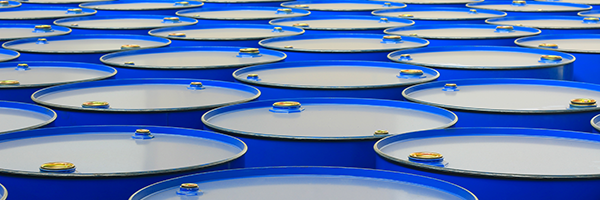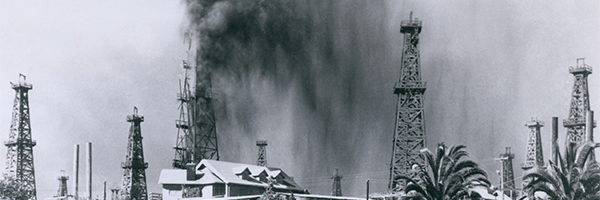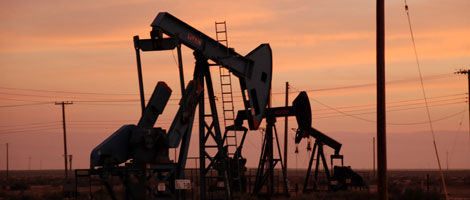
February 28, 2023 | Daily JAM, Dividend Income, Jubak Picks, PXD |
On Friday, shares of Pioneer Natural Resources (PXD) fell on a Bloomberg story reporting rumored talks between the Permian Basin oil shale producer and Appalachian natural gas producer Range Resources (RRC). On Monday shares of Pioneer rebounded as the company denied that it was in acquisition talks. The lesson? Investors really don’t want Pioneer to spend money on acquiring more assets.

February 23, 2023 | Daily JAM, Dividend Income, Jubak Picks, PXD |
Wednesday, February 22, Pioneer Natural Resources (PXD) reported better-than-expected adjusted earnings for the fourth quarter of 2022 while revenues came up short of Wall Street estimates. Revenue was still up 18% year-over-year to $5.1 billion. Fourth quarter net income nearly doubled to $1.48 billion or $5.98 share, from $763 million, or $2.97 a share, in the fourth quarter of 2021. The company declared a quarterly total dividend of $5.58/share, made up of a $1.10 base dividend and a $4.48 variable dividend. The total annualized dividend yield is approximately 11%.Which is why I’m adding the shares to my Dividend Portfolio today.

December 3, 2022 | Daily JAM |
On Friday, the European Union agreed to impose a $ 60-a-barrel cap on all purchases of Russian oil. Pay more than that and sanctions kick in that include a ban on shipping and insurance on any oil shipments when the oil has been purchased above the $60 a barrel price. That would have produced enough chaos on its own since the announcement of the cap came before oil, insurance, and shipping companies saw the full details of the sanctions. That effect is that nobody will be quite sure what purchases will trigger what sanctions when trading begins on Monday morning. One possibility is that conservative company lawyers will decide not to do a deal when they can’t figure out the consequences. At the least, that problem will slow the market on Monday. And then today, Russia announced that it will not accept the $60 per barrel price cap for its crude oil Nobody has any idea what that means (but I’ll give you my read below) Suffice it to say, that oil market chaos is a possibility

November 17, 2022 | Daily JAM, Dividend Income, Jubak Picks, PXD, Special Reports |
When I put together my Special Report: “5 Safe Dividend Stocks Paying 6% or More,” one key requirement was that the company showed a long track record of raising dividends every year and the clear potential to continue to raise dividends every year. That formula could turn a 6% annual dividend yield now into 8% or 9% or even more over the next ten years. A safe almost guaranteed 10% yield at the end of 10 years strikes me as a very attractive prospect, especially given how tough I think the financial markets are going to be over the next five years or more. (For more on that outlook see my recently revised Special Report: “Your Best Investment Strategy for the Next Five Years.”) But I realized, looking at all the high-yield stocks that didn’t make the cut for that report that the requirement for a high-probability trend of higher dividends each year for the next 10 years, that this requirement left a lot of stocks paying very attractive high dividends now on the cutting room floor. Stocks paying 8% or more got left off the list because I didn’t see a commitment at the company to continued dividend increases every year or enough growth in free cash flow to make it possible for a company to raise or maintain its dividend through the ups and downs of the business cycle. These stocks paying 8% or more were very safe bets to continue paying that yield for the next year or two. But 10 years? Too much uncertainty. Which doesn’t mean you shouldn’t own some of these stocks now. An 8% or better yield for a couple of years is a very attractive prospect given how uncertain the economy and the stock market are right now. And an investor has a very simple remedy if a company looks like it can’t or isn’t committed to sustaining that yield. Sell the stock. So with all that in mind, I’ve put together a list of five “outlier” dividend stocks paying 8% or more at a time when the SPDR S&P 500 Trust ETF (SPY) has a yield of just 1.6%.

November 14, 2022 | COP, Daily JAM, Jubak Picks, PXD, Videos |
Today I posted my two-hundred-and-fifth YouTube video. This week’s Trend of the Week: U.S. Oil Production is Not Rising as Expected. Oil prices have averaged $100 per barrel over 2022–a figure that would normally lead oil companies to expand production and capital spending, but it hasn’t this time. According to the Energy Information Administration, U.S. oil production is only up about 3% from December 2021. Projections had the U.S. at 12 million barrels a day by the end of this year, but we’re currently only at 9.77 million barrels a day. Why is the production not going up? Oil shale fields deplete faster than traditional fields and we may have reached peak production in some of these oil shale basins. The best properties may have been exhausted and we’re now seeing companies move to their more inferior properties. The drilling and fracking may be happening at a steady pace, but we’re not getting as much out of the wells and properties currently being drilled. Companies that had a stock of drilled, but uncompleted have now worked through those “spare” wells and don’t have the motivation to drill new ones as Wall Street and investors would prefer high dividends instead of capital spent on a commodity that has an unclear future. The two oil companies I would look at are Pioneer Natural Resources Company (NYSE: PXD) and ConocoPhillips (COP) because of their mix of resources.

November 8, 2022 | Daily JAM, Dividend Income, Special Reports |
You might expect this list to be dominated by oil and natural gas producers. You might expect that–but you’d be wrong. Stocks like Pioneer Natural Resources (PXD) and Devon Energy (DVN) certainly pay dividends now high enough t qualify for this list, at 9.86% and 7.50% for the trailing 12 months, respectively, but I don’t think it’s possible to project that level of dividend payout for the 10-year period that I’ve focused on for this strategy. (Which doesn’t mean stocks like these aren’t worth owning on their dividends for the shorter term. In fact, I’m putting together a list of what I’d call current dividend outliers as an extra for this Special Report. These outlier stocks pay very attractive (better than 6% again and sometimes way better than 6%) dividends but the companies don’t have a track record or corporate culture that makes me feel certain about the longevity of this level of payout. Pioneer, for example, pays a 2-part dividend with a core rate and a variable rate depending on revenue and profits. That to me speaks to a company that doesn’t feel able to commit to the current high payout for very long. For a dividend stock with a high payout and a predictably long duration of that level of payout in the energy sector, I’m going to look at pipeline companies, especially those with big exposure to natural gas exports (specifically LNG exports) and the growing CO2 sector.

November 3, 2022 | BHP, Daily JAM, Dividend Income, KMI, Special Reports, VZ |
It’s time to use this Bear Market to give any long-term dividend income strategy a big boost. This Special Report will tell you why and how and give you five stock picks that you can use to deliver that extra income.

October 25, 2022 | COP, Daily JAM, EQNR, Jubak Picks, PXD, Videos, Volatility |
Today I posted my one-hundred-ninety-sixth YouTube video: Trend of the Week Seasonal Trends in Energy. This week’s Trend of the Week: Seasonal Trends in Energy. There’s a predictable pattern in oil and natural gas prices. In late fall, October to November, you can expect a deep dive to begin and carry on through the winter, with a sharp rise in March and early spring. You can see this trend looking at previous years in the United States Oil Fund (NYSEARCA: USO) and the United States Natural Gas Fund, LP (NYSEARCA: UNG). Right now, we’re heading into that dip in energy prices but you should not sell – in fact, you should be adding to these positions. This seasonal fall in energy prices will allow you to get ahead of the spring bounce. Europe’s energy supply is enough to get through the upcoming winter but, in March, as they look toward next year’s supply, they’ll need to start rebuilding inventories in a market strained by the war in Ukraine, cuts in production, and a hostile OPEC. Stateside, the US Energy Information Administration is projecting record production from the Permian Basin of Texas and Oklahoma, as well as record production of natural gas this year. Even though we’re not seeing a whole lot of capital expenditure, they’re uncapping wells and pumping them harder. Look at USO and UNG as ETF oil and natural gas buys For individual stocks I’d look at Pioneer Natural Resources (NYSE: PXD), ConocoPhillips (NYSE: COP), and EQUINOR (NYSE: EQNR)–all of which I own in portfolios and have no intention of selling anytime soon.

October 23, 2022 | AAPL, AMZN, CAT, Daily JAM, EQNR, GOOG, Morning Briefing, MSFT, PXD |
Earnings. Earnings. And more earnings. From the big bellwether technology stocks: Apple, Amazon, Microsoft, Meta Platforms, and Alphabet. Wall Street has already slashed earnings forecast for these stocks so there’s a good chance these companies will report earnings that surpass expectations even if only by a few pennies. By and large, though, these reports will show either an absolute drop from the September quarter of 2021 or, at best, a slowing of revenue and earnings growth. Key to the market’s reaction will be what these companies say about expectations for the next quarter or two. Will they emphasize what are already clear slowdowns in PC and smartphone sales? Will they speak to the elephant in the room–the U.S/China trade war? Will they say that a strong dollar plus inflation is cutting into sales outside the United States and U.S. sales to domestic customers who are showing signs of “price fatigue”?

October 5, 2022 | Daily JAM, Morning Briefing, USO |
Today, Wednesday, October 5, OPEC and its allies, including Russia, approved a two million barrel-a-day cut in oil production. This is the largest cut in production since the onset of the pandemic. Here’s the key paragraph in the OPEC+ statement: “Adjust downward the overall production by 2 mb/d, from the August 2022 required production levels, starting November 2022 for OPEC and Non-OPEC Participating Countries as per the attached table.” On the news, oil and oil stocks extended the rally that began on news leaks yesterday.

October 3, 2022 | Daily JAM, Morning Briefing |
All it takes is a report that OPEC+, the group of oil-producing countries that includes Saudi Arabia and Russia, is considering a big cut in production at its meeting this week to send oil and oil stocks off to the races. As of noon New York time on Monday, U.S. benchmark West Texas Intermediate is up 4.21%, and international benchmark Brent crude is higher by 3.75%.

August 3, 2022 | COP, Daily JAM, Jubak Picks, PXD |
As of 2 p.m. New York time today, August 3, U.S. benchmark West Texas Intermediate crude was down 3.30% to $91.30 a barrel. International benchmark Brent fell 3.07% to $97.45 a barrel.
The drop was a result of Wednesday data from the U.S. Energy Information Administration showing that U.S. crude and gasoline inventories unexpectedly rose last week. U.S. crude supplies were up 4.5 million barrels in the week ended July 29, while gasoline supplies rose 200,000 barrels. This comes at a time when gasoline inventories usually fall on high seasonal demand. This report was, for the day, more than enough to offset the announcement of a smaller than expected increase in oil production by OPEC+ of just 100,000 barrels a day for September.










